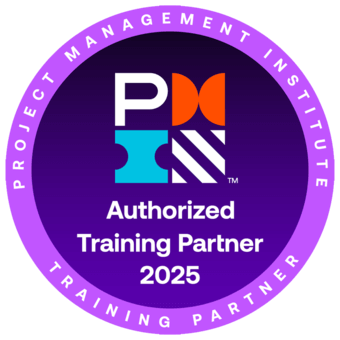Project Planning
Project Planning
Skills you’ll gain
Establishing a strong project planning process is essential to delivering a successful project. In this Project Management Planning course, you’ll go through the key project planning steps, starting with the baseline and planning through the scope, schedule, and resources using traditional and Agile Scrum methodologies.
Learn to identify project requirements, boundaries, and deliverables and use today’s most effective best practices, so you can fine-tune your projects and gain a 360-degree view of the most vital project planning processes.
By the end of this Project Management Planning course, you’ll be able to:
- Monitor the critical components of a project, including project constraints and resource allocation.
- Use work breakdown structures, story cards, diagrams, and schedules.
- Identify necessary resources and when to use contractors or vendors.
- Understand estimating techniques and strategies to assign appropriate deadlines.
- Construct a project plan with 28 engaging lessons, including real-world examples and actionable exercises.
- Earn 14 PDUs or contact hours toward your Project Management education for certification with PMI.
This course is based on The Project Management Institute,
If your goal is to become a Certified Project Management Professional, then we recommend taking our additional courses on Project Management Framework, Project Teams and Stakeholders, and Project Performance and Delivery.
Once enrolled, our friendly support team and tutors are here to help with any course-related inquiries.
Syllabus
Download syllabus-
1
WBS Dictionary The WBS Dictionary is a table or spreadsheet that is organized by project task and contains all project planning details. 4m
-
2
Task Description Task Descriptions are the statements of scope for each of the project activities. They are written in the format of “action – completion point.” 3m
-
3
Story Cards Story Cards - also known as Product Backlog Items (PBIs) - are the technique used for documenting project scope, quality requirements, estimates, and priority of the deliverables in an Agile/Scrum project. 3m
-
4
Writing Story Cards There is an art to creating effective story cards. In this lesson, an Agile project team member will learn the best practices for writing story cards. 6m
-
5
Backlog Requirements are managed in an Agile project using the Project Backlog. This is a prioritized list of the project deliverables. 4m
-
1
Milestone Schedule Understand when and how to use a milestone schedule on a project. Learn how to create a milestone schedule. 3m
-
2
Gantt Chart Understand when and how to use a Gantt chart on a project. Learn how to create a Gantt chart. 6m
-
3
Network Diagram A network diagram is a project scheduling technique that shows the relationship between tasks by depicting project activities as a flowchart. 5m
-
4
Task List Schedule A Task List Schedule is a schedule format used to communicate tasks with dates to extended team members or those who do not have a major role in the project. 3m
-
5
Kanban Schedule A Kanban Schedule is a project scheduling tool for managing a batch of similar items that must be processed through the same project steps. 5m
-
6
Float, Slack, Buffer Float (slack or buffer) is extra time that a task could consume beyond its duration estimate without impacting other aspects of the project. Total float is extra time without impacting the end date of the project and free float is extra time without impacting another project task. 6m
-
7
Critical Path Critical Path is a project scheduling technique that determines the shortest time that the current project plan can be completed. 5m
-
8
Sprint Controls Sprint Controls are the planning and tracking techniques used by an Agile project team to organize the project tasks and activities. 5m
-
1
Resource List The project Resource List is a list of all individuals working on the project with their contact information and all special equipment and facilities required to accomplish project tasks. 3m
-
2
Responsibility Matrix The Responsibility Matrix is a project management tool for correlating project work assignments with project team members. 3m
-
3
Using Contractors and Vendors Contractors, vendors, and suppliers are used on projects to reduce risks. These external resources have capacity and capability that allows them to complete project tasks better than internal resources would be able to complete them. 5m
-
4
Project Budget Understand what is normally shown in a project budget. Learn how to create a time-phased project budget. 6m
-
5
Resource Over-allocation Project resource demands are often inconsistent throughout the life of the project leading to times when resources are over-allocated. 6m
-
1
Estimating Techniques The most commonly used techniques for creating project estimates are analogous estimates, bottom-up estimates, three-point estimates, and using a parametric model. 5m
-
2
Time Box Time Boxes are an estimating technique that sets a finite time for a task or task group. The amount of scope that is completed is variable. Whatever scope is done when the time box ends is the amount of scope for that activity on the project. 4m
-
3
Effort-Duration-Money Project estimates of effort, duration, and money are interrelated. Based upon the cost and availability of the resources involved, once you have one of the estimates, you can derive the other two. 5m
-
4
Estimating Uncertainty Project plans are built with an accumulation of estimates, each of which has a level of uncertainty associated with it. The level of uncertainty is a major contributor to the accuracy of the plan and the amount of project risk. 5m
Certificate
Certificate of Completion
Awarded upon successful completion of the course.

Instructor
Ray Sheen
Ray is a certified Project Management Professional (PMP) with the Project Management Institute, a certified Scrum Master with Scrum Alliance, and certified Lean Six Sigma Black Belt with IASSC. He is a member of the Project Management Institute and the Product Development Management Association.
He is president and founder of Product & Process Innovation, Inc. and is a veteran business leader with over 25 years of executive, project management, and engineering management experience. Ray has worked in several industries including aerospace, electrical distribution and utilities, biotechnology, appliances, electronics, machining, medical devices, pharmaceutical, automotive, and financial services. He has held executive management positions in a Fortune 500 company and has been involved in entrepreneurial startup organizations.

Ray Sheen
Project Management Instructor & Author
Accreditations
Link to awards The PMI ATP seal, PMI, PMP, CAPM and PMBOK are registered marks of the Project Management Institute, Inc.How GoSkills helped Chris
I got the promotion largely because of the skills I could develop, thanks to the GoSkills courses I took. I set aside at least 30 minutes daily to invest in myself and my professional growth. Seeing how much this has helped me become a more efficient employee is a big motivation.



